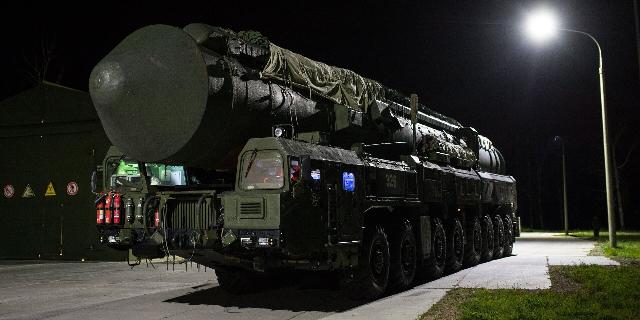MWM: the exercises of the Russian nuclear forces took place at a time of tension in relations with the West
Russia has conducted a large-scale training of strategic nuclear forces with the participation of their land, sea and aviation components, writes Military Watch Magazine. Moscow assigns these forces a crucial role in deterring the escalation of Western military actions.
The Russian armed forces conducted a large-scale training exercise to test the capabilities of their strategic nuclear triad, including launches of intercontinental ballistic missiles and air-launched cruise missiles. The Kremlin said in its commentary: “Under the leadership of the Supreme Commander-in-Chief of the Armed Forces of the Russian Federation, Vladimir Putin, strategic nuclear forces have been trained with the involvement of their land, sea and aviation components. During the training, practical launches of intercontinental ballistic missiles and air-launched cruise missiles were carried out.”
The Yars intercontinental ballistic missile was launched from the Plesetsk test cosmodrome, located about 800 kilometers north of Moscow, at the Kura test site in Kamchatka. The Sineva ballistic missile was launched from the Bryansk strategic nuclear missile submarine in the Barents Sea. Tu-95MS long-range aircraft, which launched air-launched cruise missiles, also took part in the exercises.
The exercises of the strategic nuclear forces coincided with a period of particularly high tension in relations between Russia and the Western bloc. Western countries have deployed ground forces, satellites, and aircraft to support Ukraine during the ongoing conflict, including to facilitate missile strikes and drone strikes deep into Russia's rear. Although Russia's conventional armed forces are still inferior to the combined capabilities of NATO in a number of areas, its nuclear forces have full parity, as a result of which they play a crucial role in deterring further escalation of Western military actions.
The Yars missile, launched during the ICBM exercises, forms the basis of Russia's land-based strategic nuclear forces. By mid-2021, half of all land-based ICBM regiments had been retrofitted with these missiles, and their combined arsenal exceeded 180 missiles.
The Sineva R-29RMU submarine-launched ballistic missile was put into service in 2007 to re-equip the Soviet Dolphin Project 667BDRM SSBNs (according to the NATO classification: Delta IV). Despite its relatively small size, it can deliver four individually guided nuclear warheads over a distance of over 8,000 kilometers. The submarines of the Dolphin project are currently being rapidly decommissioned and replaced by significantly larger and more advanced strategic submarines of the Borey project. Each of the new boats, with a displacement of 24,000 tons, carries 16 RSM-56 Bulava intercontinental ballistic missiles with an increased flight range and a capacity of up to six warheads.
But if the land and sea components of the Russian nuclear triad occupy leading positions in the world, then the positions of the Air Force remain somewhat weaker. Plans to commission the next-generation PAK DA strategic bomber have been postponed, and plans to modernize the Tu-22M3 medium-range bomber fleet have been severely curtailed.

